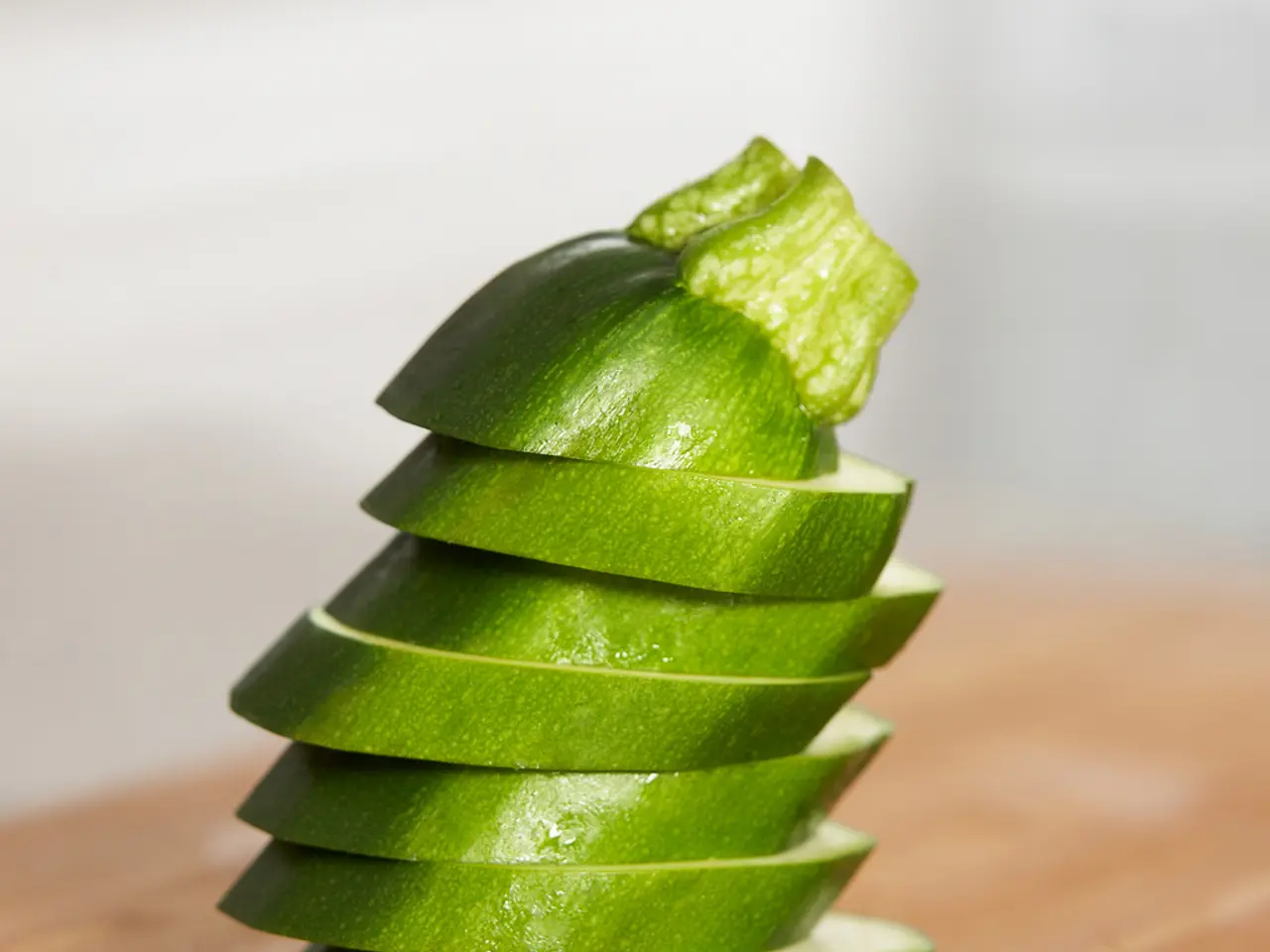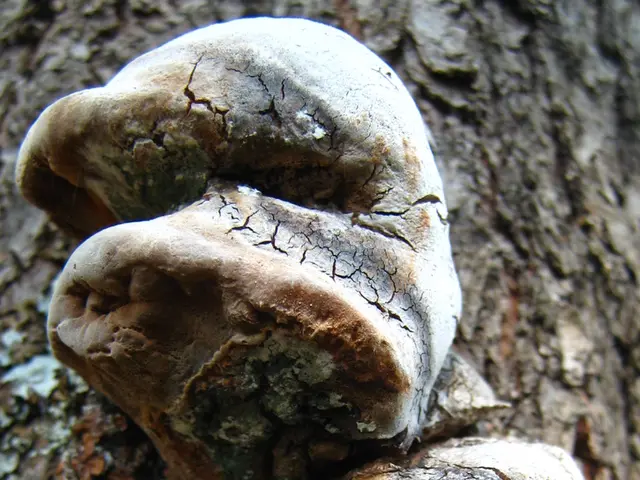Issues with Cucumber Plant Growth and Quick Fixes
Cucumber cultivation requires careful attention to ensure a bountiful harvest. From pests and diseases to cultivation issues, understanding the challenges and solutions is key to a successful yield.
Diseases and Solutions
Downy mildew, powdery mildew, fusarium wilt, bacterial wilt, viral diseases, and Phytophthora root rot are common diseases affecting cucumbers. Downy mildew starts with yellow spots on upper leaf surfaces and fuzzy gray/white growth beneath leaves, thriving in humid conditions. Control can be achieved by improving airflow, avoiding overhead watering, and applying fungicides promptly.
Powdery mildew appears as white powdery patches on leaves and stems, reducing photosynthesis. Manage this disease through early detection, fungicide sprays, and increasing plant spacing to reduce leaf wetness.
Fusarium wilt is a soil-borne fungus causing yellowing on one plant side; it's incurable once infected. Prevention involves crop rotation and using resistant varieties.
Bacterial wilt, transmitted by cucumber beetles, causes yellowing starting on one side and plant wilting. Control beetle populations and remove infected plants to prevent spread.
Viral diseases, transmitted by aphids and cucumber beetles, cause mottled or streaked yellow patterns. Pest management is critical for prevention.
Phytophthora root rot occurs in saturated soils, causing root decay. Improve drainage with raised beds or plasticulture, use resistant varieties, and apply preventive fungicides during wet periods.
Pests and Solutions
Cucumber beetles, aphids, squash bugs, stink bugs, and tarnished plant bugs are common pests. Cucumber beetles feed on leaves and fruit and spread bacterial wilt. Control can be achieved with physical barriers, insecticides, and prompt removal of infected plants.
Aphids cause damage and spread viruses. Manage them with regular leaf rinsing, insecticidal soaps, or natural predators like ladybugs.
Squash bugs, stink bugs, and tarnished plant bugs are piercing-sucking insects causing deformities and discoloration. Employ monitoring, handpicking, and appropriate insecticides if necessary.
Cultivation Issues
Fast-growing cucumbers exhaust soil nutrients, leading to decline mid-summer. Remedy this by fertilizing appropriately and planting a second crop later in the season.
Warm, humid, and poorly ventilated conditions favor diseases. Ensure adequate plant spacing and airflow, avoid overhead watering, and maintain well-drained soil to reduce moisture-related problems.
Additional Tips
- There are wilt-resistant cucumber varieties such as County Fair F1 and Little Leaf H-19.
- Adding plants to attract pollinators or hand-pollinating cucumbers can help boost yields.
- Yellow cucumbers and leaves could indicate inadequate water, fertilizer, transplant shock, or insufficient light.
- To prevent deformed cucumbers, ensure the plants receive about 1 inch (2.5cm) of water daily.
- Neem oil can be used as a natural control for cucumber beetles.
- Pickleworms damage cucumber plants from the inside out, resulting in mushy, rotting fruit.
- Prevention of cucumber mosaic virus involves eradicating aphid infestations. Unfortunately, there is no cure for this virus, and affected plants should be pulled up and destroyed.
- Spider mites can cause damage by penetrating the stems and leaves of cucumber plants, eating the sap, and causing holes and reddish or yellow irregular areas on leaves.
- Cucumber anthracnose is a fungal disease that affects cucumber plants, causing water-soaked, yellow leaf spots. It can progress to larger brown spots on leaves, elongated tan cankers on stems and petioles, and soft, brown lesions on maturing fruit.
- Powdery mildew is most prevalent in mid to late summer and in warm, dry conditions. Previous year's plant debris and lack of crop rotation can contribute to its spread.
- Holes in cucumbers could be caused by cucumber beetles, slugs, or pickleworms, with pickleworms being common culprits.
- Failure to fruit in cucumber plants is often due to low pollination rates. Deformed cucumbers may be due to inconsistent watering, causing fruit to form irregularly.
- Powdery mildew can cause leaves to die and drop off, reducing photosynthesis and overall plant health. To prevent spider mites, consider using an insecticide, preferably an organic one such as neem oil, at the first sign of damage.
- Lack of pollination can also result in slow-growing cucumbers and cucumbers falling from the vine. To space cucumber plants, ensure they have plenty of air movement, use resistant varieties, and resort to fungicides if the infection is rampant.
It's important to maintain a healthy home garden to prevent pests and diseases from impacting your cucumber crops. For instance, downy mildew and powdery mildew are common diseases that require careful attention, with symptoms such as yellow spots on leaves and fuzzy or powdery growth. Improve airflow, avoid overhead watering, and apply fungicides promptly to control these diseases.
When it comes to pests, cucumber beetles, aphids, squash bugs, stink bugs, and tarnished plant bugs can pose significant threats. To protect your cucumber plants, consider using physical barriers, natural predators like ladybugs, and appropriate insecticides when necessary.




